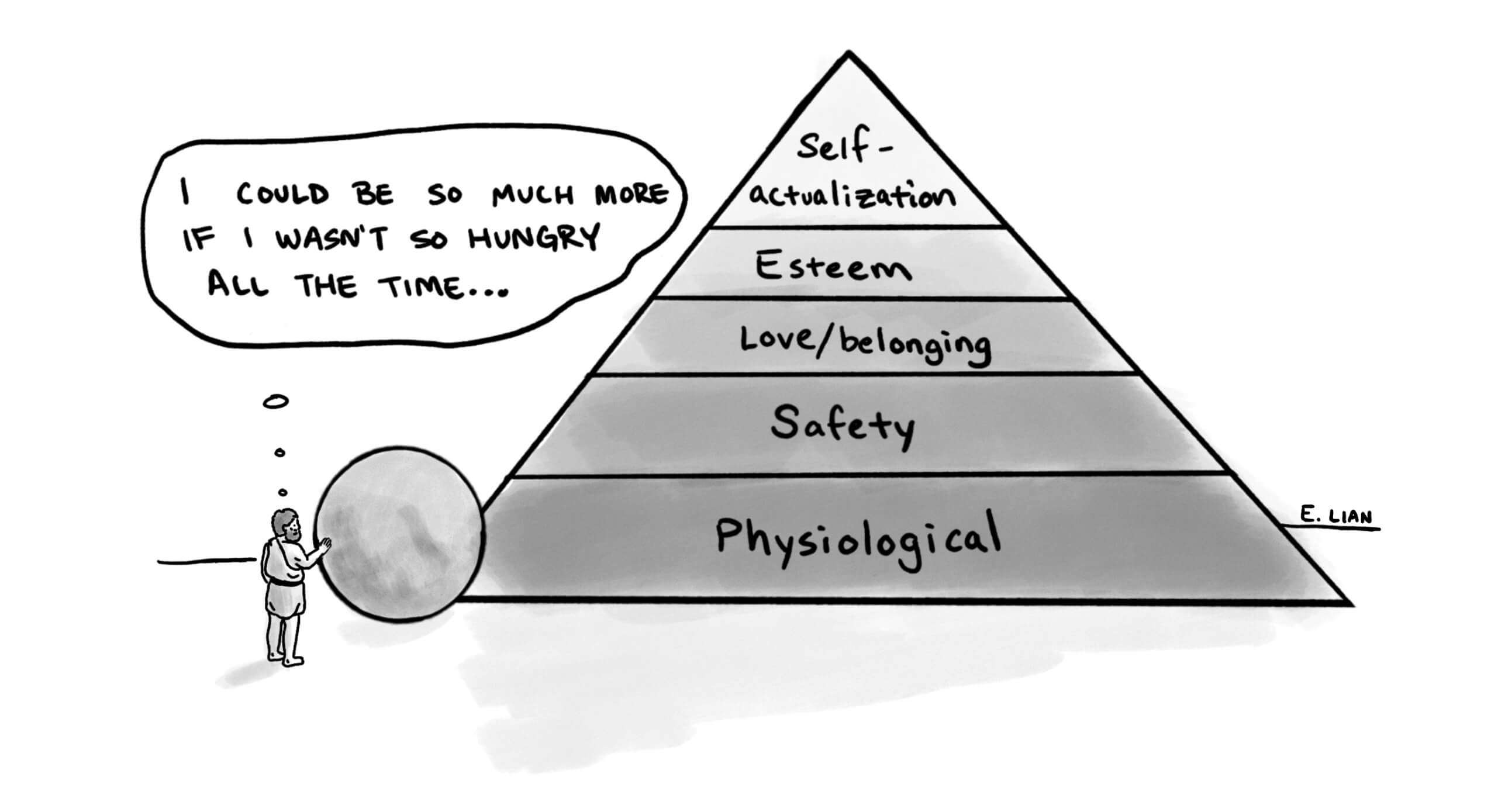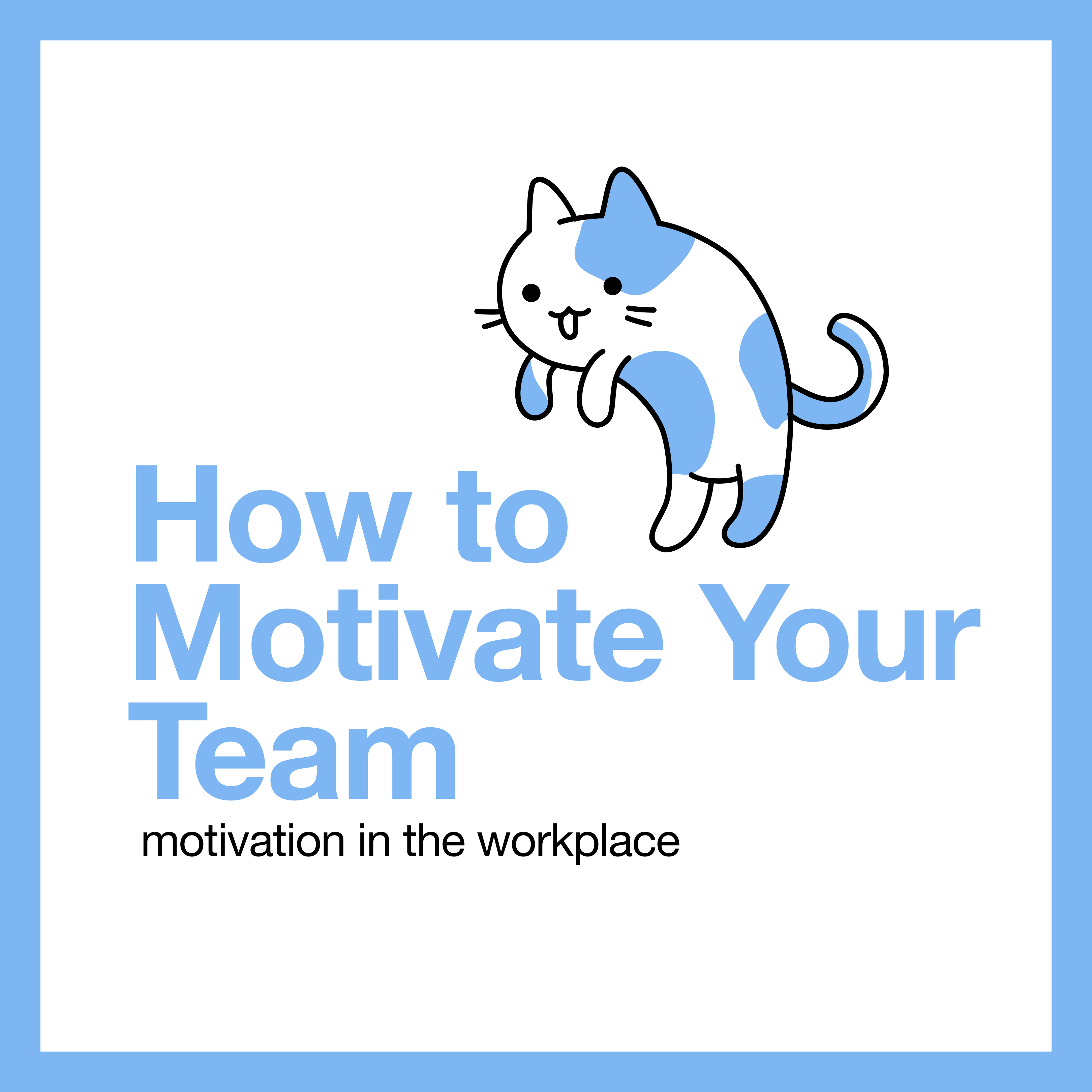In any group setting, it's important to understand what makes your team members tick. Learning what your co-workers value and how they are motivated can create a more productive and fulfilling work environment in the long run. There are two main types of motivation: intrinsic and extrinsic motivation.
Intrinsic Motivation
Intrinsic motivation is motivation that comes from within. It's the pursuit of something for personal satisfaction rather than external reward. Hobbies like cooking, playing instruments, or playing sports are great examples of intrinsic motivation as they are personally rewarding activities, for most.
Intrinsic motivators are not limited to hobbies though. When you are intrinsically motivated, you might simply enjoy your line of work, or you may find fulfillment in working towards a greater cause. Healthcare workers, teachers and other public service workers are often intrinsically motivated. In Japanese, finding this kind of higher purpose is called Ikigai, your reason for being.
Extrinsic Motivation
Extrinsic motivation is motivation that comes from an external source. Parents often motivate their kids using extrinsic motivation like the promise of rewards or the threat of punishment, e.g., doing chores for an allowance or to avoid getting grounded.
In a work environment, rewards for extrinsically motivated tasks often involve money or other forms of compensation, but can also look like acknowledgement and promotions. These co-workers are motivated by their paychecks and opportunities for career advancement.
We don't buy into the misguided hustle culture ideologies espoused by celebrities like Kim Kardashian which is why it's all the more important to understand what kind of motivation your team members respond to. Intrinsic and extrinsic motivation form the foundation for several motivation theories. Today, we're digging into some of our favorites.
Maslow's Hierarchy of Needs

It's only fitting we start with everyone's favorite psych 101 vocabulary word. Published in 1941, Abraham Maslow argued that as humans meet their basic needs (extrinsic), they also strive to meet a set of higher needs (intrinsic).
Maslow's hierarchy consists of the following needs:
1. Physiological
2. Safety
3. Love / Belonging
4. Self-Esteem
5. Self-Actualization
Maslow contends that the higher level needs can't be met until the basic needs are met first. For a modern day case study we can look to Gravity Payments CEO, Dan Price, who increased the minimum salary at his company to $70K by cutting his own compensation by $1 million.
Whenever I see stories about how the min wage will doom businesses, they never talk about us.
We doubled our small biz min wage to $70k. After, our business tripled. Productivity grew. Employees were happier. Exec pay plummeted.
No one ever asked me to testify on how we did it.
McClelland's Human Motivation Theory
Building on Maslow's Hierarchy, David McClelland identified three needs that he believes we all have in his 1961 book, "The Achieving Society." Those three needs are achievement, affiliation, and power. While we exhibit all three needs, we each have a dominant motivator.
Achievement motivation
According to McClelland, achievement motivated people have a strong need to set and accomplish challenging goals. They like to receive regular feedback on their progress, but often prefer working alone. Advancement is important for those with achievement as their dominant motivator, regardless of reward or recognition.
Affiliation motivation
Affiliation motivation is the desire to belong to a group or organization. Employees that are motivated like this love working in teams and contributing to the group's success. They often have great interpersonal relationships and can communicate well with both co-workers and clients.
Affiliation motivation in a work setting can look like small group projects, team-building exercises, and socialization opportunities outside of work hours.
Power motivation
The last of McClelland's motivators is power. Power motivated people want control and influence. They enjoy competition, status and recognition. In organizations, they seek to influence people and make a big impact. These types of employees are strongly suited for leadership positions.
Get organization tips & ideas sent to your inbox every month!
Herzberg's Two-Factor Theory
In the late '50's, Frederick Herzberg interviewed a group of employees on different aspects of job satisfaction. He boiled it down to two dimensions: hygiene and motivation.
Hygiene factors are things like company policies, supervision, salary, interpersonal relations, and working conditions. According to Herzberg, hygiene issues can only minimize dissatisfaction but can't motivate employees. Motivators, on the other hand, are things like achievement, recognition, responsibility, advancement and the work itself. Motivators can fulfill intrinsic needs for meaning and personal growth. The Two-Factor theory states that once hygiene issues have been addressed, motivators will promote job satisfaction and productivity.
Competence motivation
Competence motivation theory contends that people are attracted to activities in which they are competent or capable. This theory is more than simply playing to one's strengths though. Competence motivation harkens back to a concept proposed by Robert W. White in 1959: effectance motivation. Effectance is knowing or believing one can have an effect on their environment, the opposite of which is helplessness. This can be observed in young children; toddlers will try to act capable or "grown up" almost as soon as they can grasp those concepts.
In a work environment, implementing competence motivation can look like continuing education, leadership development tracks, and rewarding employees for certifications and trainings. Competence motivated employees are often quick learners, and good at training other employees as it gives them the chance to demonstrate their competence.
Putting it into practice
Believe it or not, there are more motivation theories out there, but what are we supposed to do with all this information? The important thing is to recognize that there is no one-size-fits-all. Different people need different types of motivation.
Start by examining which types of motivation you respond to. It's important to recognize how those shape your interactions and acknowledge that others may not respond the same way. If you're unsure how your co-workers are motivated, the simplest way to find out may be to ask. One-on-one's and surveys can help you begin to understand everyone on an individual level. From there, try to meaningfully address their hygiene factors and motivators.
Motivation is a heavily discussed and studied topic, as evidenced by the plethora of theories and models out there. Without it, a team can spiral into social loafing, a phenomena where individuals in a group exert less effort than they would if they were on their own. Although it may feel like a frivolous exercise, finding the right motivators in a work environment can create a more engaged, more productive and more fulfilled team.
